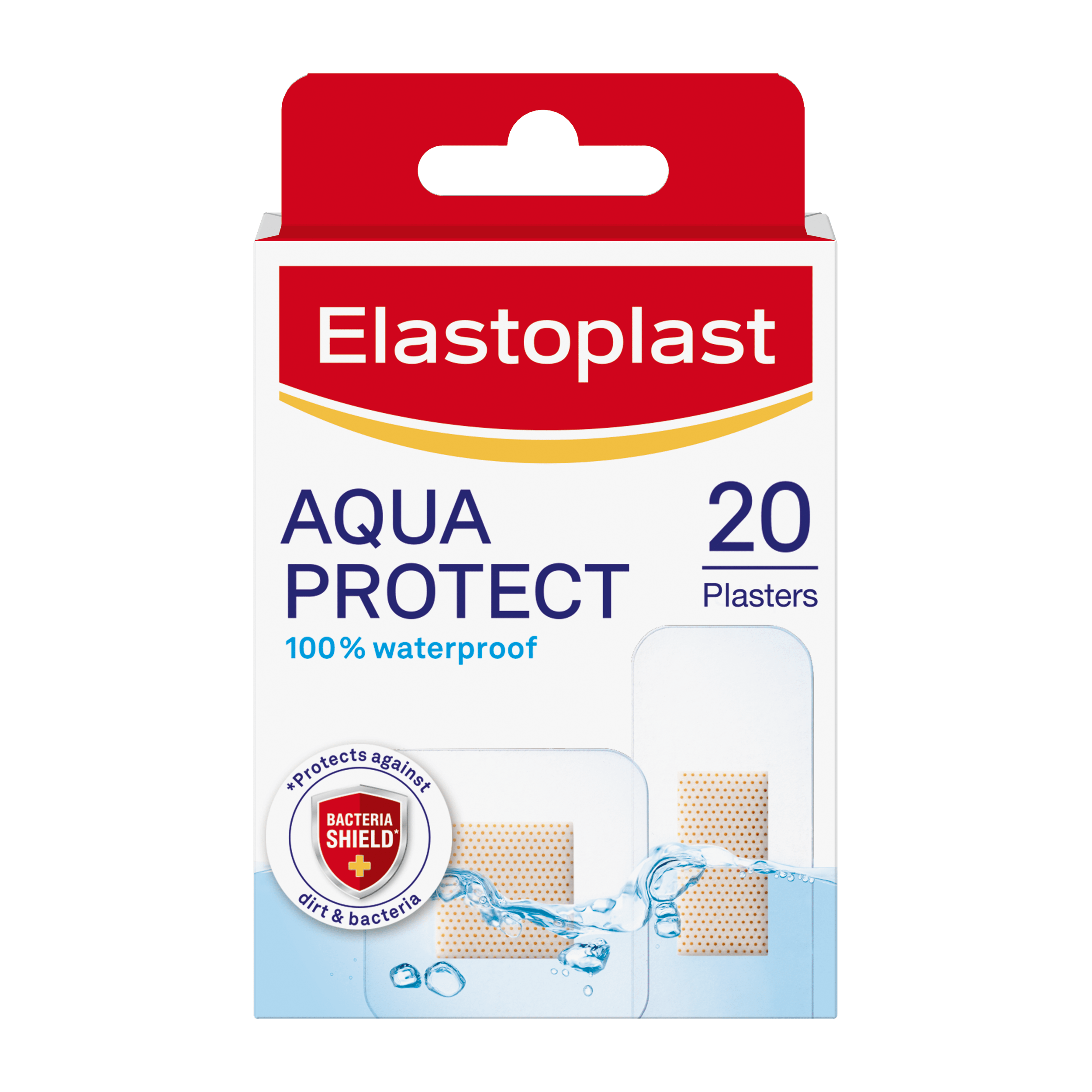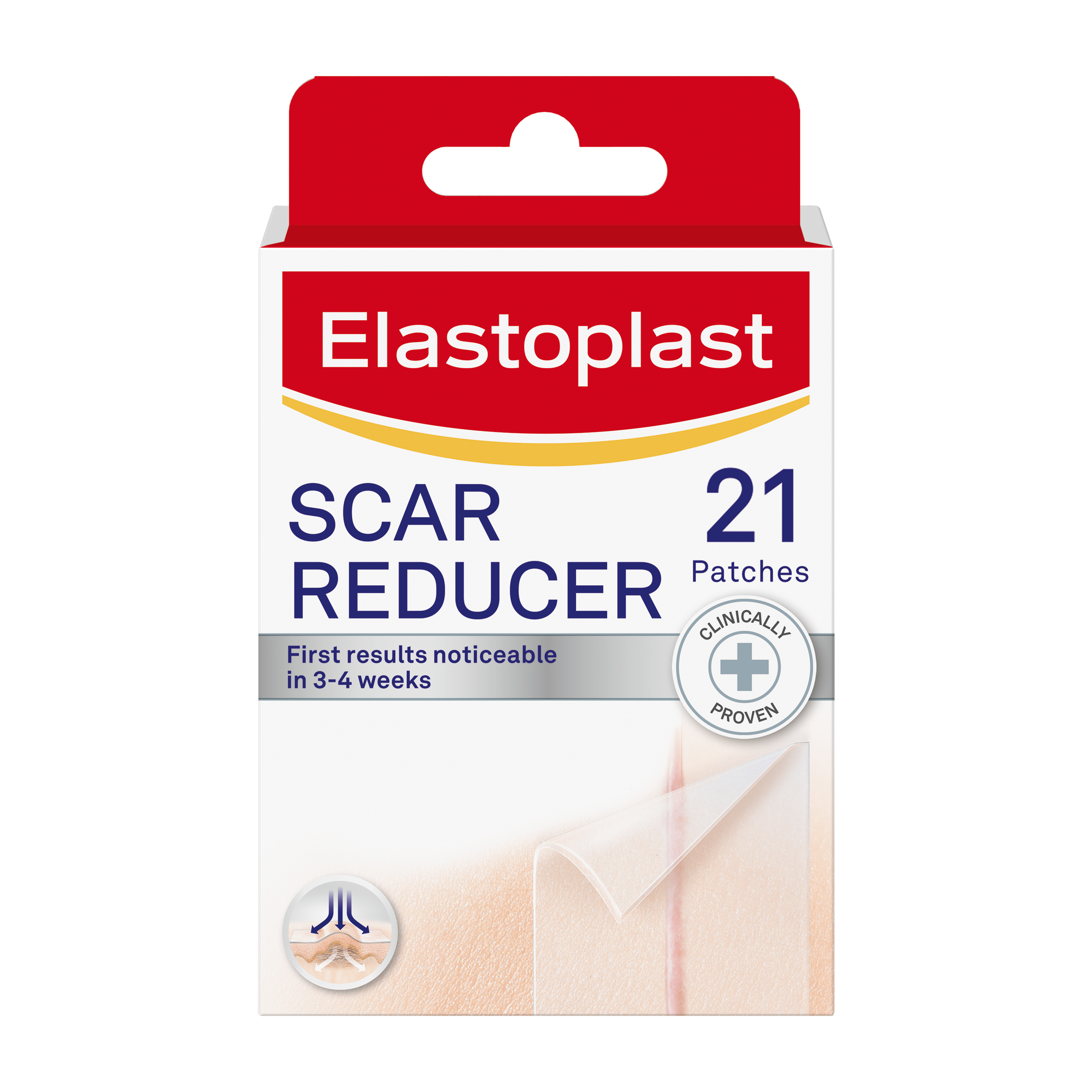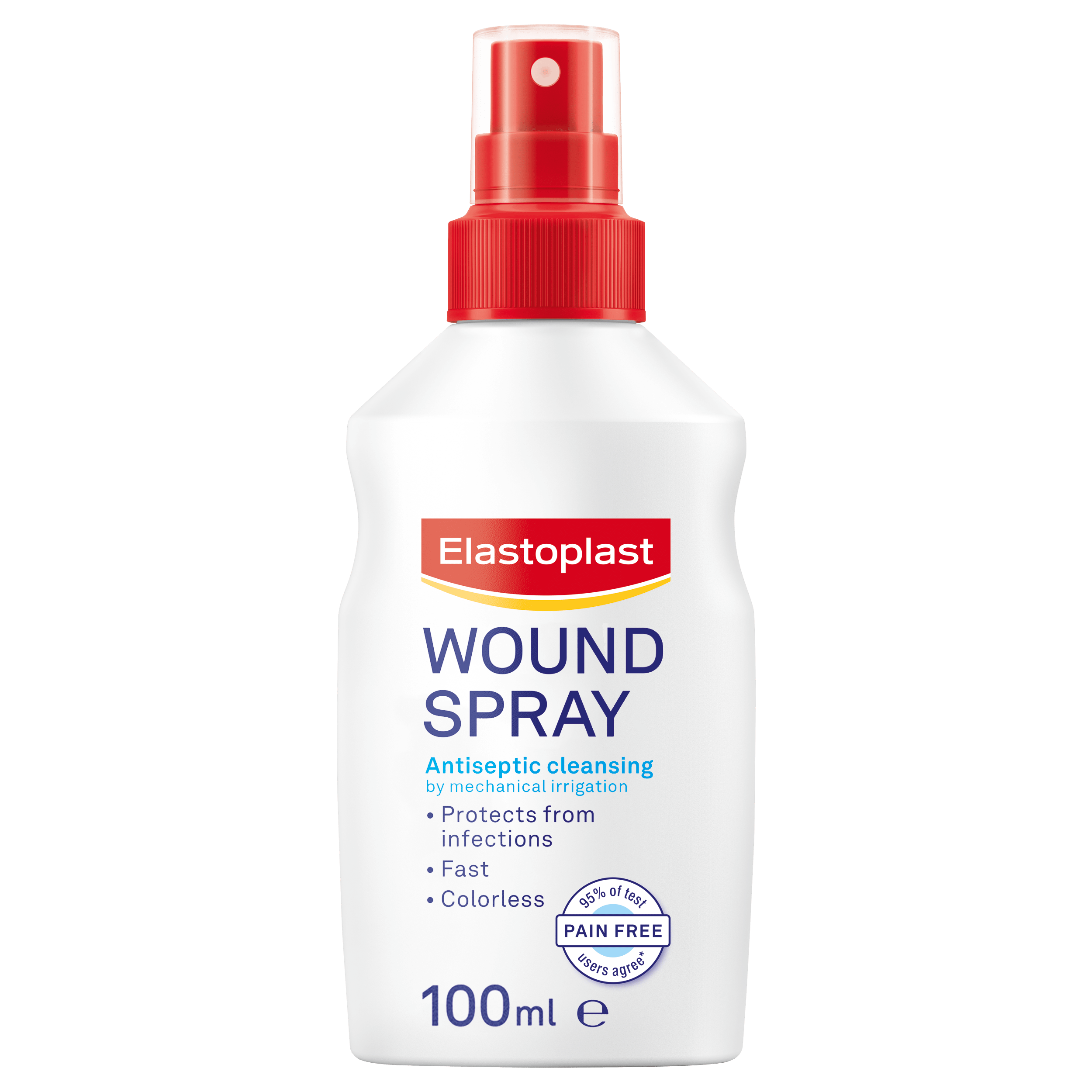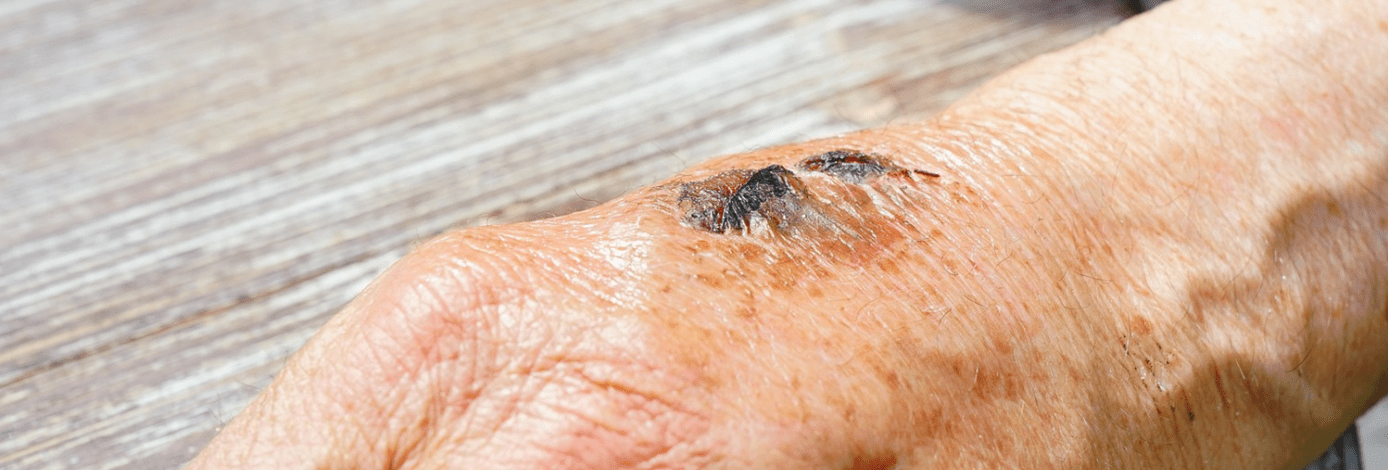Scabs are a common occurrence in the wound healing process. They are there to protect your wounds from any bacteria entering your wound and also to protect from any further blood loss. However, scabs are not always good for the skin to develop as they can delay the wound healing process and potentially cause noticeable scars. It is best practice to care for your wounds prior to scabs developing in a dry environment.
What are scabs?
Scabs are the protective layers of tissue that form at the start of the healing process, after an area of skin is damaged from injuries such as a cut, graze, or scratch. Scabs are usually formed in dry conditions into a hardened crust layer that normally looks red or dark brown in colour.
The primary purpose of a scab is to protect the wound from bacteria in order to prevent the wound from being infected.
The primary purpose of a scab is to protect the wound from bacteria in order to prevent the wound from being infected.
Should scabs be removed?
Scabs should not be picked as they protect your wound. If you pick or pull at the scab it would only lengthen the healing process and can lead to the development of a scar.
How long does a scab take to heal?
Scabs will typically fall off naturally over a period of time that ranges from a few days to a few weeks, depending on the size of the wound.
How to avoid scabs
You should try to avoid developing scabs in the first place because they delay the healing process for your skin by disturbing the regeneration of new skin tissue. Scabs can be prevented when a wound is cared for in a moist wound healing environment.
First, clean the wound in order to reduce the risk of infection. Covering your wound with an Elastoplast plaster will prevent scabs from forming, reducing the likelihood of the wound causing a scar, allowing your skin to heal flawlessly. The Elastoplast Fast Healing Plaster can be used to prevent dry scabbing as it keeps the wound moist while selectively absorbing the wound fluid which leads to accelerated healing.
First, clean the wound in order to reduce the risk of infection. Covering your wound with an Elastoplast plaster will prevent scabs from forming, reducing the likelihood of the wound causing a scar, allowing your skin to heal flawlessly. The Elastoplast Fast Healing Plaster can be used to prevent dry scabbing as it keeps the wound moist while selectively absorbing the wound fluid which leads to accelerated healing.
Causes of scabs
Scabs are primarily formed to protect your wound against blood loss and infection. Blood clot cells (platelets) start to clot in order to prevent any more blood or fluids from leaving the body. As the blood on the wound begins to dry it creates the crusty scab layer over the wound. Scabs can form as a result of:
- Acne
- bacterial infection
- Bug bites
- Chickenpox
- cuts, grazes and scratches.
- Cysts
- Eczema
- Folliculitis
- fungal infection
- Herpes
- Impetigo
- Infected scalp injury
- Psoriasis
- Seborrheic dermatitis
Scabs on the scalp
Scabs on the scalp can largely be treated in the same manner as scabs anywhere else on the body. In some cases they can be a symptom of a separate condition that may require further treatment, such as:
- Scalp psoriasis is an infection that develops symptoms of itching or flakiness on patches of skin that looks like dandruff. Scratching the affected areas can cause scabs on the scalp and lead to symptoms such as severe hair loss.
- Contact dermatitis is a type of eczema that occurs when an irritant substance comes into direct contact with a person’s skin. Blistered scalp skin can be a symptom of contact dermatitis which can also lead to scabs on the scalp.
- Folliculitis is an infection of the hair follicles that can cause pimples or sores from shaving. They can also lead to scabbing and scarring if picked.
- Seborrheic dermatitis is a common condition that causes red, itchy, and flaky skin. This rash often occurs on the scalp or near the hairline and could cause scabbing if itched excessively.
Infected Scabs
An infected scab differs in looks from a basic scab because it is more yellow in colour, with the surrounding area becoming swollen or inflamed. Other symptoms of an infected scab are: severe redness around the wound, leakage of fluids, increased levels of pain, a discomforting odour or a fever and chills.
Yellow scabbing can also imply that you may have impetigo, which can commonly be caused by bacterial infection. Impetigo can spread around the body, to other people and also lead to fevers. It is advised to see a doctor if you feel unwell with a wound that you suspect is heavily infected.
Yellow scabbing can also imply that you may have impetigo, which can commonly be caused by bacterial infection. Impetigo can spread around the body, to other people and also lead to fevers. It is advised to see a doctor if you feel unwell with a wound that you suspect is heavily infected.
Treatment of a wound
You should always try and tend to your wound before the scabbing process begins. Scabs are a natural part of healing, but can delay the process, especially if the scab becomes infected along the way. The best way to treat a wound is before it begins to scab over, and potentially result in a scar. Learn more about wound healing.
Always see a doctor if the wound is deep, bleeds heavily or shows signs of infection like reddening, swelling or warmth.
Please note that, although these were compiled with great care, the tips and advice given on this website by no means substitute medical advice and treatment. If you have or suspect a health problem, consult a doctor and follow medical advice regardless of what you have learned on this website.
Always read carefully and follow the instructions for use or the product leaflets. For further information about our products, please contact us via email at ConsumerRelationsUK@Beiersdorf.com.
Please note that, although these were compiled with great care, the tips and advice given on this website by no means substitute medical advice and treatment. If you have or suspect a health problem, consult a doctor and follow medical advice regardless of what you have learned on this website.
Always read carefully and follow the instructions for use or the product leaflets. For further information about our products, please contact us via email at ConsumerRelationsUK@Beiersdorf.com.



